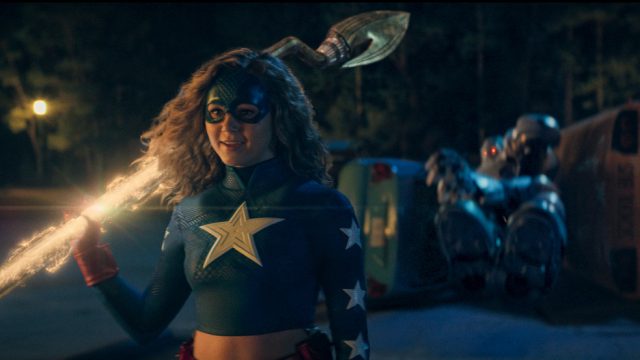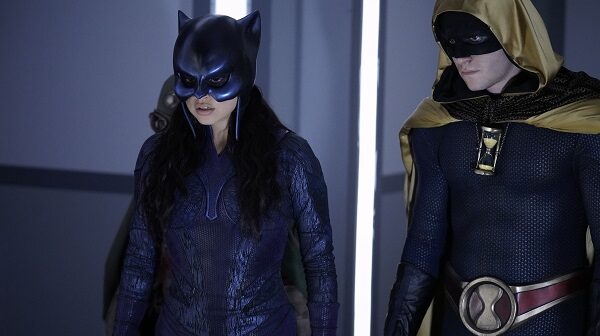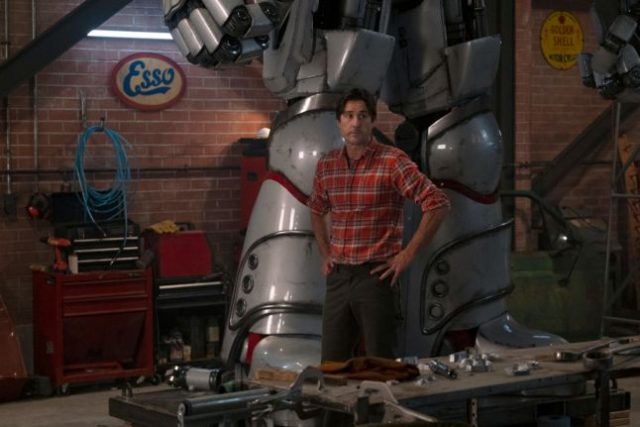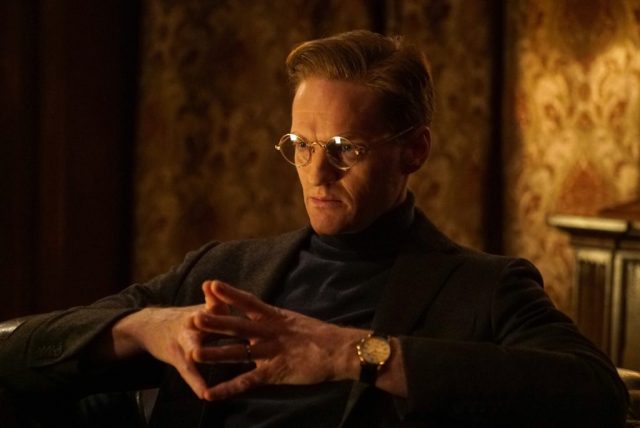NOTE: Some spoilers from throughout the first season of, “Stargirl” are present in this review
Sometimes, the appeal of a series isn’t solely tied to its quality. Sometimes, a series is just in the right place, at the right time. This is a feeling that I constantly got throughout the first season of DC’s Stargirl, the apparent final original series offering for the DC Universe streaming platform, as it prepares to be re-tooled into a different service. Stargirl really isn’t all that novel or deep, especially when compared to other DC Universe highlights such as Doom Patrol or Young Justice: Outsiders. After a long, trying Summer of trying to work around the ongoing COVID-19 pandemic however, along with all of the ills that the novel coronavirus has caused around the world since early this year, Stargirl feels like exactly the kind of superhero series that many of us could use right now. It’s light-hearted, wholesome, and built on many classic sensibilities of right and wrong, serving as lovable comfort food, rather than an envelope-pushing evolution of DC’s storytelling sensibilities.
Stargirl immediately felt very non-committal about its hosting on the adult-oriented DC Universe platform as well, considering that it aired new episodes on The CW just one day after they debuted on DC Universe, and is now fully defecting to The CW with the start of its second season next year. That co-hosting with The CW ended up being beneficial for Canadian DC fans like myself however, since it allowed some Canadian cable packages to deliver Stargirl episodes to viewers here in the Great White North, assuming we had American CW feeds to piggyback off of. Outside of that, Stargirl still hasn’t officially been made available outside of the U.S. at the time of writing (you can’t even get the first season on DVD or Blu-Ray without importing it from the States, nor can you buy the show to stream on platforms like iTunes or YouTube outside of the States), further diminishing its prospects for international appeal. That’s a shame, because Stargirl is a fun DC series for those in the mood for something undemanding, balancing a teen-friendly spirit with a surprising dramatic edge for adults.

For those unfamiliar with the character, Stargirl is a creation of former DC Chief Creative Officer, Geoff Johns, who also serves as one of the co-showrunners of the Stargirl TV series, alongside Melissa Carter. Stargirl’s civilian identity, Courtney Whitmore is named for Johns’ late sister, Courtney Johns, who was tragically killed during 1996’s TWA Flight 800 explosion and crash in 1996 (this series is also dedicated to her memory). This makes Stargirl a true labour of love for Johns, despite him leaving his former post as DC’s CCO two years ago, and that passion translates very effectively to the character of Courtney, played here by Bella and the Bulldogs’ Brec Bassinger. There have been two other live-action Stargirl portrayals set in different DC TV universes before this one, both adult variations of the character, with one appearing during Smallville’s “Absolute Justice” TV movie, played by Britt Irvin, and the other featuring within Arrowverse series, Legends of Tomorrow, where she was played by Sarah Grey, but Bassigner’s version skews much closer to her DC Comics inspiration. This means that Bassinger’s Stargirl is a teenager, not a grown woman, and she also lives with former superhero, Pat Dugan as her new stepfather, her main ally from DC Comics lore.
Stargirl’s events properly kick off when Pat convinces his wife, Courtney’s mother, Barbara Whitmore, to move them and their children to fictional DC burg, Blue Valley, Nebraska. Having to leave a life of success and popularity in California, Courtney is naturally not happy about having to move to a small town with nothing to do, particularly at Pat’s behest. What begins as a benign move to Nowhereville, USA eventually turns Courtney to the life of a superhero though, when she discovers an artifact called the Cosmic Staff, a formerly dormant, semi-sentient flying staff that activates in her presence. The staff formerly belonged to Pat’s late best friend, Sylvester Pemberton, better known in the Stargirl universe as the superhero, Starman, leader of the Justice Society of America, or JSA, which was destroyed several years previous, after its members were all killed in battle by their enemies, the Injustice Society of America, or ISA. Believing that she’s logically the lost daughter of Starman, Courtney thus decides to rebuild the JSA and train a new generation of superheroes, after it becomes apparent that the ISA are hiding among the populace of Blue Valley.

The premise of Stargirl carries a lot of promise, nicely tapping into that spirited, 1980’s-esque sense of tween/teen adventure that was spawned through major cinematic blockbusters of the era, like E.T.: The Extra-Terrestrial and Goonies, and revived in the modern era with mega-hit shows like Stranger Things. Bassinger’s Courtney is an instant delight as well, calling back to Tom Holland’s too-dumb-to-quit Spider-Man of the Marvel Cinematic Universe, having a heart that’s bigger than her brain, despite also balancing that with an unrelenting sense of justice and desire to do what’s right. This stubborn righteousness also leads to her sometimes butting heads with the more cautious, world-weary Pat, played in a standout turn by Luke Wilson, who desperately tries to reign Courtney in, knowing how dangerous the ISA truly is, and how much danger Courtney could be putting her friends and family in by provoking them.
Something that’s surprising about Stargirl is how brutal it can be in terms of its stakes as well! Despite the fun, wholesome tone, even kids are not safe from the ISA’s designs, with some suffering particularly harsh and shocking deaths during this first season! Likewise, Stargirl’s fantastical superhero world is also smartly balanced with real, relatable consequences even beyond death, eventually turning inward into modern American ideology, and how it’s influenced the current age of heroes and villains in our actual world. This is all nicely anchored around the superb lead pairing of Bassinger and Wilson as co-superheroes as well, even if the villain writing in Stargirl can be a bit more uneven. There are many members of the ISA, all of whom are recognizable DC super-villains, from the thuggish double act of Sportsmaster and Tigress, to the charming Southern cunning of Gambler, but among them, only ISA leader, Jordan Mahkent, a.k.a. Icicle, feels like a properly fleshed-out and complex character. The rest are head-scratching sociopaths who start the show off as frustratingly shallow baddies, before eventually being given contrived, faux-altruist motivations that merely serve to build their characters around confusing double standards and over-the-top, unrealistic moustache-twirling.

This is sadly even true of two of the most crucial ISA members during Stargirl’s first season, Brainwave and Dragon King, who end up being the key lynchpins of the ISA’s over-arching plot. Dragon King is built up as the true most terrifying force within the ISA, and yet despite that, he barely has any bearing on the season at all, even being defeated pathetically easily by his own daughter, and more on that in a bit. Brainwave, by contrast, feels a bit better developed, but the bulk of Brainwave’s best moments only occur because of his much better characterized son, Henry King Jr. Beginning as a stock jock/bully stereotype, Henry King Jr. is easily one of the best supporting characters on offer during Stargirl’s first season, starting as a bully, then a neglected son, then a scared victim of his own developing superpowers, then an outcast in his own right, before finally evolving into a hero that makes an ultimate sacrifice for the JSA. Henry often represents the best of Stargirl’s Season One writing, sometimes beating the JSA at their own game in terms of heroic appeal, even when he starts out as a villain.
Fortunately, Courtney’s new JSA feels a bit more consistent and evenly developed than the bulk of Stargirl’s villains, with each budding teen superhero getting the bulk of inspired character development during Stargirl’s first season. Courtney’s first recruit, Yolanda Montez, who comes to don the mantle of the new Wildcat, is a particular highlight, kicking off her role as a meek, shunned and ostracized girl from a conservative, highly religious family, whose reputation at home and at school is ruined after she ends up humiliated with nude photos that she sent to her boyfriend (who happened to be Henry King Jr.), during a class president campaign. Yolanda’s journey is easily the most fascinating, taking her from downtrodden outcast to strong-willed badass, as she confronts and eventually masters her emotional demons through her fledgling career as the new Wildcat. That’s not to say that Rick Tyler as the angsty new Hourman, or Beth Chapel as the chatty, attention-hungry new Doctor Mid-Nite, are duds though. They also go through interesting character development as the season goes on, facing relatable teen issues, but effectively growing up as well, by learning to adopt a cause that’s bigger than them, and effectively coming of age after they learn to trust and respect the extraordinary tools and abilities that they’ve now been entrusted with by the legacies of former JSA superheroes.

The rest of the supporting cast can sometimes work to mixed effect though, especially when Stargirl is occasionally unable to decide whether it wants to go all in on its comic book foundation, or try to attempt something more grounded and fueled by social commentary. This feels a bit reminiscent of Stargirl itself being hosted by two TV platforms with very different target audiences during its first season, though fortunately, this season at least does tend to avoid the more cringe-y, overbearing infantilism that some other DC shows like Supergirl can too often be guilty of on The CW. Still, Barbara Whitmore and Mike Dugan are often pushed too far into the background during Stargirl’s debut season, existing as benchwarmer characters who are clearly saving their best plots for future seasons, and only truly having noticeable bearing on the storytelling during the season finale. Stargirl’s DC Comics arch-nemesis, Cindy Burman, a.k.a. Shiv, also shows up as a key supporting character right from the start, eventually revealing her villainous identity as the Dragon King’s sinister daughter, who is determined to earn her place in the ISA. Again though, Cindy’s character is clearly saving her best storylines for future seasons, spending most of this first season as a mean popular girl stereotype, despite occupying one of the best finale teases for next season, namely when she discovers a highly dangerous DC artifact that could make her more powerful than the ISA could even imagine!
Some of these characters feel like victims of hurried storytelling, with Stargirl almost wanting to embrace a full-season CW format, even before fully defecting there. At only 13 episodes for Season One however, Stargirl doesn’t have time to fully develop all of its characters and ideas, and boy are there a lot of them brought to the table! Stargirl does at least have its own universe to play in though, rather than being just the latest addition to The CW’s ‘Arrowverse’ lineup of DC shows. That said, Stargirl’s placement on the post-Crisis Earth-2 presumably makes it just an interdimensional hop, skip and a jump from the Arrowverse’s new Earth-Prime setting, if and when Earth-Prime decides to link itself back to the new live-action DC Multiverse that spawned from the fallout of The CW’s Crisis on Infinite Earths crossover event. Stargirl is distinct enough to not need a crossover with the Arrowverse, per se, but considering that it’s now a full-time CW series starting next year, it feels inevitable that Team Stargirl will eventually meet up with Team Flash, Team Supergirl and/or Team Batwoman at some point, even with Stargirl being separated into its own independent universe on Earth-2.

Stargirl certainly isn’t the best show to come from the short-lived DC Universe original series slate, but it’s a lovable dessert to end DC Universe’s first and seemingly only wave of original shows. The storytelling can vary in quality at times, especially when Stargirl doesn’t always know how to pace itself across a streaming-oriented 13-episode season, but the heart and charm behind its lead heroes is nonetheless highly infectious. Most of the villains sadly don’t currently keep up with the heroes’ appeal, a problem that’s certainly not unheard of in The CW’s DC shows especially, but the action and effects in Stargirl also benefit from the show’s initial hosting on DC Universe, and the solid budget that comes with that. That being said, hopefully Stargirl moving full-time to The CW after Season Two’s debut next year doesn’t mean its effects budget and choreography efforts get slashed. Hopefully Stargirl formulates an actual distribution plan for international territories like my native Canada by then as well! If you do have the means to check out Stargirl on either DC Universe or the CW app though (whether by being American, or knowing how to use a VPN), its first season is an uplifting, friendly binge that provides a charming addition to the live-action DC Multiverse’s tales, even if it’s not really showing you much that you haven’t seen before in other superhero media.

